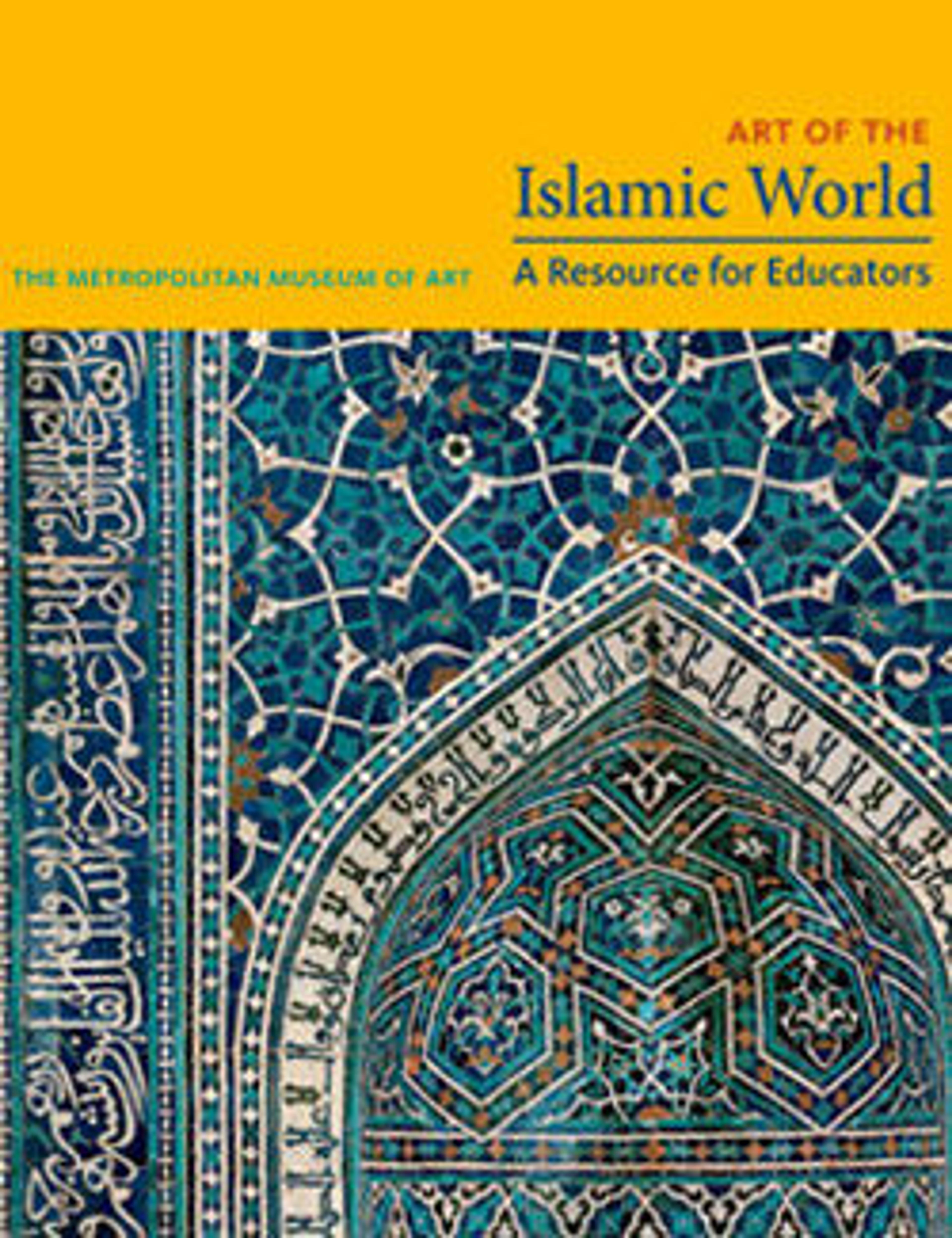Triangular Amulet Holder
This amulet, in the shape of a triangle, or tumar, was worn on the chest and presents an interesting variation of the standard tumar design. Instead of a mountain motif, a pair of horns crowns the piece. A cylindrical tube, or bozbend, embellished with cabochon-cut carnelians and turquoise beads features prominently in the center. It would have held a Muslim prayer scroll, thus enhancing the talismanic powers of the entire piece. The solidness of the upper part is balanced by the dangling elements extending below it, which produced a soft, pleasant sound.
Artwork Details
- Title:Triangular Amulet Holder
- Date:late 19th–early 20th century
- Geography:Attributed to present-day Uzbekistan, Karakalpak
- Medium:Silver; fire-gilded, with stamped beading, silver shot, decorative wire, gilt and silver applied decoration, loop-in-loop chains, cone-shaped pendants, slightly domed and cabochon carnelians, and turquoise beads
- Dimensions:H. 9 in. (22.9 cm)
W. 9 in. (229 cm) - Classification:Jewelry
- Credit Line:Gift of Marshall and Marilyn R. Wolf, 2008
- Object Number:2008.579.12
- Curatorial Department: Islamic Art
More Artwork
Research Resources
The Met provides unparalleled resources for research and welcomes an international community of students and scholars. The Met's Open Access API is where creators and researchers can connect to the The Met collection. Open Access data and public domain images are available for unrestricted commercial and noncommercial use without permission or fee.
To request images under copyright and other restrictions, please use this Image Request form.
Feedback
We continue to research and examine historical and cultural context for objects in The Met collection. If you have comments or questions about this object record, please contact us using the form below. The Museum looks forward to receiving your comments.
